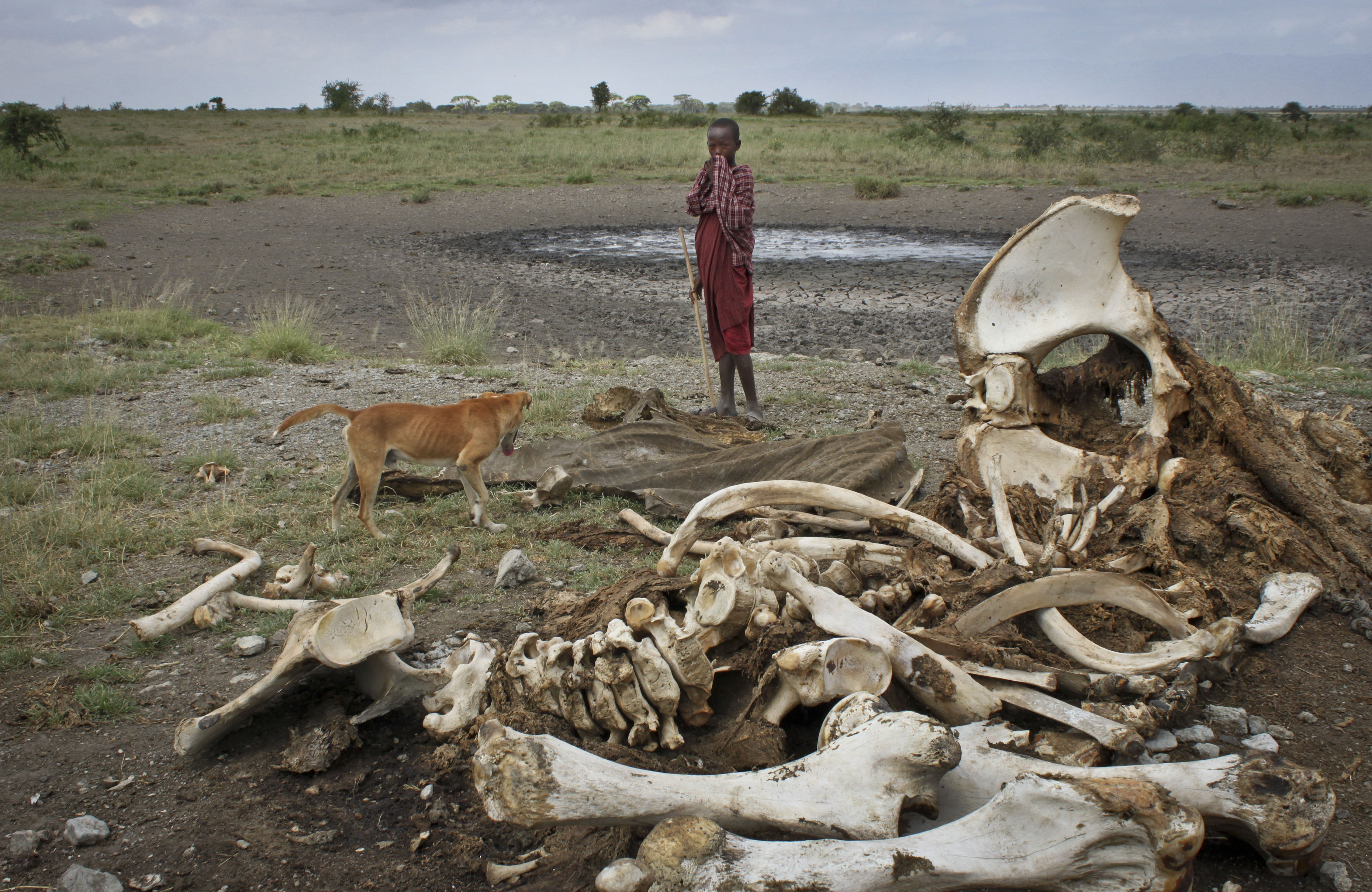Poachers are killing elephants on an industrial scale in 2 areas of Africa, DNA study shows
By Christopher Torchia
THE ASSOCIATED PRESS
JOHANNESBURG _ Investigators who collected DNA from the tusks of slain elephants and painstakingly looked for matches in the vast African continent have identified two large areas where the slaughter has been occurring on an industrial scale, according to a study published on Thursday.
The two areas are Tanzania in the east and a cross-border region encompassing several nations in the central-western part of Africa.
Samuel Wasser, an author of the study published in the journal Science, said he hopes the study will focus law enforcement efforts and increase international pressure on host countries to crack down on poaching, but he acknowledged the challenge.
“You’re literally asking them to police themselves,” Wasser said in a telephone interview with The Associated Press. He suggested donor countries could demand more robust conservation efforts in exchange for development aid.
The big size of shipments of confiscated ivory from both regions _ over half a ton _ indicates the presence of transnational crime syndicates likely operating with corrupt authorities, said researchers who matched DNA from seized tusks to samples of elephant hair, tissue and dung from wildlife parks across Africa.
Wasser, director of the Center for Conservation Biology at the University of Washington in Seattle, in the United States, described the two areas that the study identified as “major hotspots” where elephant poaching far surpasses the scale of the killing for profit elsewhere.
Elephant populations in both areas were already known to be under siege by poachers who have killed tens of thousands annually in recent years to meet rising demand for ivory in Asia, particularly China. An average of at least several dozen tons of ivory is seized each year, roughly 10 per cent of the total amount of ivory that is poached annually, said authors of the new study.
On Thursday, authorities in Bangkok announced that raids by multiple law enforcement agencies across Asia, Africa and Europe resulted in more than 300 arrests and over 600 seizures of assorted wildlife contraband, including more than 12 tons of ivory, as well as rhino horns, whale ribs and sea horses.
In New York City on Friday, a ton of confiscated ivory will be crushed in Times Square to draw attention to wildlife trafficking.
The dire poaching situation in Tanzania was already illustrated by a recent census, part of a continent-wide effort to count elephants. The result, announced this month, revealed a 60 per cent decline to an estimated 43,330 elephants in Tanzania since a 2009 census, according to the Wildlife Conservation Society.
Tanzania’s minister for natural resources and tourism, Lazaro Nyalandu, has said the country has taken anti-poaching steps, including the hiring of 500 additional rangers, the establishment of an elephant orphanage and an appeal for more help from international conservation groups.
Interpol assisted in the University of Washington study, which analyzed 28 large ivory seizures in Africa and Asia between 1996 and 2014. Researchers built a DNA database from 1,350 elephants in about 30 African countries and linked results with DNA from seized tusks.
Between 2006 and 2014, more than 85 per cent of seized ivory from savanna elephants came from southeast Tanzania and adjacent areas of northern Mozambique, as well as further north in Tanzania’s Ruaha and Rungwa wildlife parks as poachers moved on from depleted killing grounds, the study said. Some DNA samples came from areas north of Ruaha, indicating the hotspot could be shifting toward southern Kenya, it said.
The other poaching hotspot in the past decade is the “last stronghold of forest elephants,” a conservation area called Tridom that spans Gabon, Cameroon and the Republic of Congo, Wasser said. Poachers have also hit hard in an adjacent area in Central African Republic.
Each hotspot covers about 58,000 square miles (150,000 square kilometres), each roughly equal to the size of the U.S. state of Illinois. The study found that most ivory was shipped, or about to be shipped, from a country other than the origin nation, possibly to mask smuggling routes.
The consumer end of the ivory trade in Asia is also elaborate, said William Clark, a study co-author and environmental crimes expert at Interpol.
Much of the ivory is carved into jewelry, cigarette holders and seals used to stamp signatures; an item weighing about 30 grams (0.07 pounds) can sell for about $200, he said. A pair of tusks can weigh about 10 kilograms (22 pounds), meaning several hundred ornate items can be extracted from a single elephant’s ivory.
“Ivory is like Gucci shoes or a Rolex watch or any other fashionable item,” Clark said in a conference call with journalists. “You don’t sell it in dark alleys. It’s sold in retail outlets, in boutiques, in department stores.”
The DNA-tracking technology in the University of Washington study has potential for use in prosecutions of suspected poachers, said George Wittemyer, an assistant professor at Colorado State University’s department of fish, wildlife and conservation biology. Wittemyer, who has studied elephants in Kenya, was not involved in the research.
“I hope this is going to get further political movement on this issue,” he said.
www.stmedia.startribune.com





